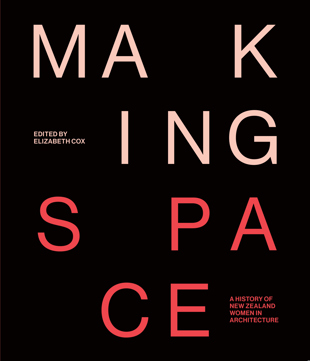Historian Elizabeth Cox writes on the Spinoff about the surprises she uncovered during the process of writing Making Space: A history of New Zealand women in architecture
‘A fact which often strikes people outside the profession of architecture – but hopefully is not a surprise for anyone within it — is that only 27% of registered architects are women, even though the graduates from architecture schools have been roughly equal for more than 15 years. As I am someone who works in the cultural and heritage sector, surrounded by women in every meeting and workplace, this was a surprise to me. In 2022 — only 27%!
Our book, Making Space, goes some way to explain why this number is still so low — but it focuses more on the amazing achievements of women within, and alongside, the profession. The women showcased in the book demonstrate that, despite the odds stacked against them, strength of character, professional skills and perseverance can overcome.
Making Space started with an appendix. Tucked away in an appendix to a book about Wellington architects from 1840 to 1940 was the only Wellington woman to have registered as an architect during that time – Lucy Greenish. She registered just over a century ago, in 1914. The write-up spurred me on to find out more about her life. What I found was a story of war, economic vulnerability, determination, an illegitimate baby, family secrets and records stretched across nations.
From Lucy’s story I uncovered hundreds of stories of women working in architecture around the country. Each time, like Lucy, it was putting together a jigsaw puzzle of sources — images, family histories, electoral rolls, application forms, oral history — that brought me closer to understanding their work and lives.
Even in the first half of the 20th century I found dozens of women working in architecture firms around the country. Margaret Hamilton, working for Cecil Wood, one of Christchurch’s best known architects, was the only employee he didn’t fire as he tried to keep his head above water during the 1930s depression. Thelma Williamson worked as a draftswoman for Louis Hay in his Napier office before and after the 1936 Napier earthquake. Numerous examples of Hay’s architectural plans have Thelma’s initials on them, showing she drew and traced them under his instruction, and others were her own work. One of the buildings Williamson worked on was St Paul’s Presbyterian Church in Napier. Upon the spire’s completion in January 1931, she climbed the 33 metres of scaffolding and put the weathervane on the top. A newspaper account, headed “Adventurous Girl”, noted that she had been chosen for this task as she had “a considerable amount of work to do in connection with the drawing of the plans of the church”. Just weeks later, still not quite completed, the church was completely destroyed in the earthquake. Thelma herself narrowly missed being killed at her desk on the day of the quake. Another New Zealand woman, Alison Sleigh, left New Zealand in the early 1920s and became one of the very first women to train at the famous Architecture Association in London, after they finally agreed to let women attend. Likewise, Te Puea Herangi (Waikato) used architecture to return her people to their rightful place: she commissioned many whare, including Mahinarangi at Tūrangawaewae, and designed housing for her people. Many of these stories have been lost to the standard architectural narrative in New Zealand.’
Read the full article here.


